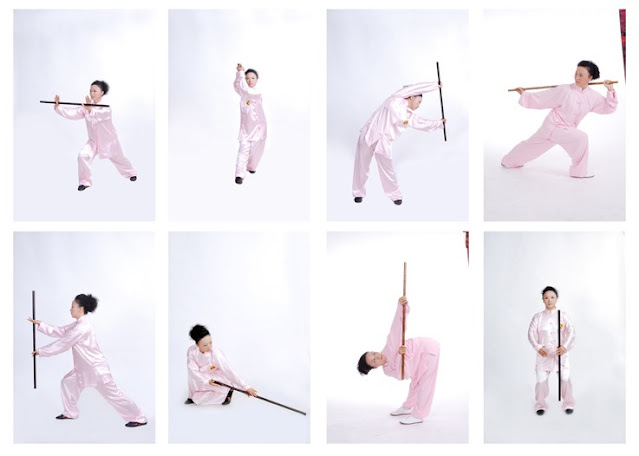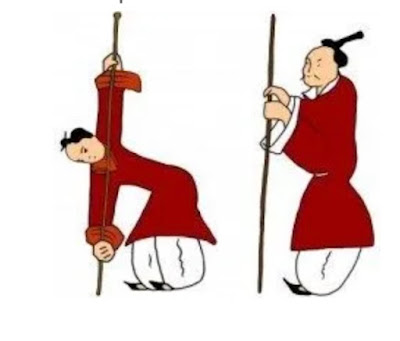YANG = Preserve
SHENG = Life
ZHANG = Stick
"TAIJI HEALTH PRESERVATION"
I've been practicing these forms for some time now but am ready to being them into our "Qigong in a Park" practices. I’ve been holding off for two reasons:
- The longer bamboo "sticks" are not conducive to practicing indoors. Remember, we've been hibernating for the winter.
- We're heading back to the park to practice outside tomorrow and it's going to be chilly, we'll need to move, get the blood and the Qi flowing.
We have practiced indoors with shorter bamboo sticks doing joint opening exercises with amazing results. Remember, if Qi is to become stuck and then stagnant or turbid, it's likely to happen in the joints. "Oy, my knees."
There are also TaiJi forms that are used with an opponent. I make the distinction of TaiJi and Qigong in a rather simplistic way: TaiJi cultivates and draws on Qi by practicing blocks and strikes used with an opponent, there are no opponents in Qigong. We are simply cultivating our own Qi.
Spinning is a fast moving, focused movement of the stick which might come in handy if faced with an opponent. Intentionally.
But, what sparked my interest initially? I stumbled on a very beautiful video by Tara0Tao practicing Taiji Yang Sheng Zhang.
Yang Shen Zhang is a set of eight forms:
- Boatman Rows with an Oar
- Boat Rows Slowing
- Wind Kisses Lotus Leaves
- Boatman Tows a Boat
- Iron Stick Calms the Sea
- Golden Dragon Wags Its Tail
- Search for Treasure in the Sea
- Qi Returns to the Dan Tian
In the Pictures of Daoyin Exercises from the Han Dynasty (206 BCE - 220 CE) two figures are in different postures wielding sticks. While stick forms have been practiced for centuries, the practices were formalized more recently into this set by the Chinese Health Qigong Association (CHQA.)

The exercises harmonize Yin and Yang. All of the movements are soft and slow. The CHQA recognizes five key points of the practices:
- The stick coordinates the body and spirit. Chinese philosophy uses "spirit" to describe thought and concentration of the mind, or the heart-mind.
- The waist functions as a pivot to harmonize the body and the stick. We twist, turn, bend, and stretch around the waist as a center. Keeping the waist and hips relaxed we practice lifting the stick while lowering the Qi to the Dan Tian. As we lower the stick we raise the Qi to the crown of the head, the Bai Hui. When we rotate the stick our waist becomes the anchor.
- We massage acupoints and the internal organs. We not only press on points and areas of the body but also stretch, thereby stimulating internal organs, and clearing meridian channels. By moving and shifting weight we are also increasing bone density.
- Movements are circular just as they are in nature.
- We integrate the hands and the stick as one by thinking of the stick as an extension of the arms. We focus on the Lower Dan Tian to guide our movements while letting the stick pull and push our bodies.
Where does one find a good stick? While there are plenty of online resources for fancy sticks, I procured all of mine at the local garden store. Short sticks which we use for those shoulder opening exercises in the first video are 40" although 36" would work just fine.
You'll notice thread wrapped around the sticks. Sure, bamboo cracks. This is an old trick I learned from my days of Nordic skiing with bamboo poles.
The longer sticks are 6' although the CHQA suggests that 4' will suffice.
This week's practice
I wish you happiness and health, and remember, follow your bliss.
Brian








No comments:
Post a Comment